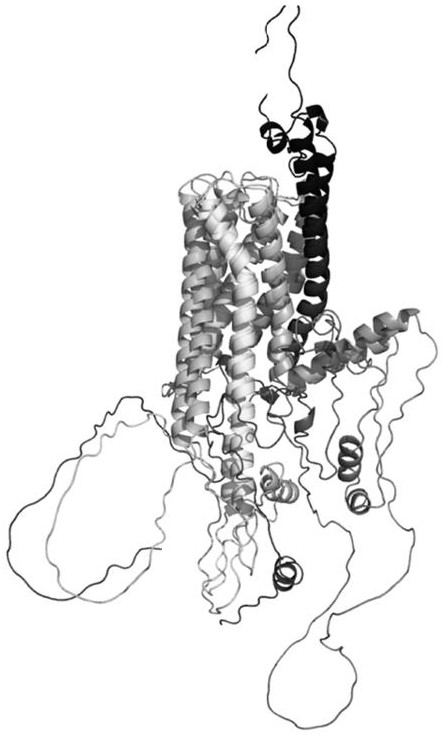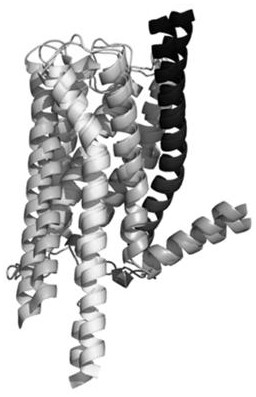Modified GPR75 and application thereof
A sequence and amino acid technology, applied in the field of modified GPR75 and its application, to achieve high expression, good stability, and the effect of improving stability and expression
- Summary
- Abstract
- Description
- Claims
- Application Information
AI Technical Summary
Problems solved by technology
Method used
Image
Examples
Embodiment
[0073] Embodiment: the preparation of transformation type GPR75
[0074] 1. Sequence optimization
[0075] In this example, the protein structure prediction software used is AlphaFold local version (v2.1.0) and RoseTTAFold.
[0076] 1.1. Truncation and transformation of wild-type GPR75
[0077] Wild-type GPR75 has a long random sequence region, which is not suitable for protein structure analysis. In this example, according to AlphaFold2 and RoseTTAFold two models for GPR75 secondary structure prediction ( Figure 1A ), the predicted results for the transmembrane region are very similar. The reliability of the random sequence region is very low, so we truncated the original random sequence region of the GPR75 receptor, leaving the key seven transmembrane regions of the receptor ( Figure 1B ). The wild-type and its truncated sequences are shown below (see SEQ ID NO: 1 for details), truncated between the fifth transmembrane helix and the sixth transmembrane helix of wild...
PUM
 Login to View More
Login to View More Abstract
Description
Claims
Application Information
 Login to View More
Login to View More - R&D
- Intellectual Property
- Life Sciences
- Materials
- Tech Scout
- Unparalleled Data Quality
- Higher Quality Content
- 60% Fewer Hallucinations
Browse by: Latest US Patents, China's latest patents, Technical Efficacy Thesaurus, Application Domain, Technology Topic, Popular Technical Reports.
© 2025 PatSnap. All rights reserved.Legal|Privacy policy|Modern Slavery Act Transparency Statement|Sitemap|About US| Contact US: help@patsnap.com



